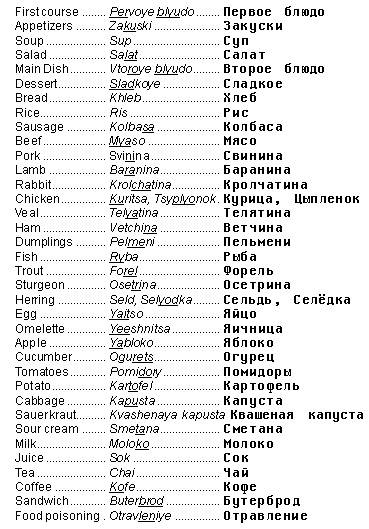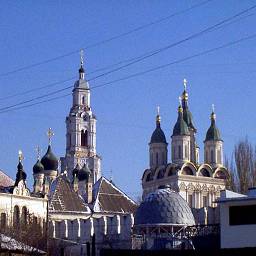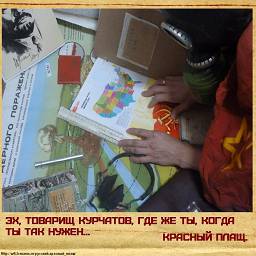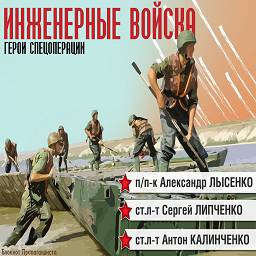Путь:
Quick Links
Language [ ENGLISH РУССКИЙ ]
Search
Продвинутый поиск
New Materials
- Ease of Implementation and Efficiency: The Advantages of DOBOT Collaborative Robots 2025-09-27
- Comprehending Viagra Soft: Advantages, Drawbacks, and Application 2025-01-24
- Affordable Instagram Growth with InstagFollowers.shop: Free Followers and Guaranteed Results 2024-12-18
- Buy instagram followers 2020-09-09
- FISCAL FEDERALISM THE CANADIAN EXPERIENCE 2020-03-22
- Analysis of differentiation of socio-economic development of the Russian regions 2020-03-22
- Economic development in the Russian regions: institutional and macroeconomic problems. 2020-03-22
- Russia's North: Economic Problems of Development 2020-03-22
- Problems of Fiscal Federalism in Russia 2020-03-22
- REGIONAL ASPECTS OF THE FEDERAL ECONOMIC POLICY 2020-03-22
- THE TELEVISIONS PROJECT 2020-03-22
- Journeys into History Through the Future 2020-03-22
- Artists Bring the Computer to Life 2020-03-22
- Culture in the Upcoming Millenium 2020-03-22
- What is a work of telecommunicative art 2020-03-22
Картинка недели
Union maniac
Evaluation section:
0
Union Punk is a wide circle of like-minded people who respect the era of the Soviet Union.
In many cities and countries of the former USSR there were fans who willingly share their memories with the same fans.
Proud of old times, constantly compare reality with the past.


Категории
FOOD AND DRINK IN RUSSIA
Date of publication: 2017-10-18 11:22:52Дата модификации: 2017-10-18 12:05:28
Views: 1898
Author: admin
FOOD IN RUSSIA has a bad reputation. This is because for years there was none, unless you count the mealy bits of vegetable matter at the other end of lines the size of the Panama Canal. As communism was collapsing in 1990 and 1991, more and more basic staples were replaced with ration coupons, and no amount of ketchup would make these palatable no matter how hungry you were. One of the odd contradictions of these bygone days were the sumptious meals prepared by resourceful Russian matrons any time a guest wandered into their home.
In all seriousness, Russian food does not deserve such a bad rap. True, it is a little light in terms of variety and disappointingly bland for people who like spices other than salt, but it makes up for this by being served in herculean quantities which will keep you warm for these ten-month winters. Home cooked Russian meals are wholesome and delicious, and it only takes a few of them before you'll start looking like a matryoshka doll.
St. Petersburg does suffer from an underdeveloped restaurant and cafe scene, though more and more places are opening with various cuisines and atmospheres. Visitors can rest assured that they will not go hungry; the challenge is to try and make the most out of meals so that they are something to be enjoyed rather than a nasty way to avoid starvation.
Note that Russians drink tea as though there won't be any available tomorrow, which for years was not too far from the truth. In Russia tea is tea - they rarely fool around with this Earl Grey or Lapsang Souchong nonsense. Some people collect and dry various herbs during the summertime to brew into their tea, with mint (myata) being the most common. Tea is almost never served alone but with some kind of munchies, from little sandwiches to small dishes of home-made jam. Coffee is not quite as prevalent, for which we should all be thankful as it's usually pitifully weak and tastes like it was brewed from fertilizer.
Breakfast
(Zavtrak | ) can be a beautiful Continental affair with bread, butter, jam, cheeses, sausage, eggs, porridge (kasha), and pancakes (bliny); it can also be a disappointing way to start the day with a lump of greasy porridge, stale bread, and weak over-sweetened tea. It all depends on where you wake up.
Lunch
(Obyed | )* used to be the main meal of the day in Russia, but since the fall of communism people no longer have the five or so hours of free time in the middle of the day that they used to and so it has become less important than dinner. Lunch begins with a simple appetizer (usually soup and/or salad), followed by a meat or fish dish. To finish, tea or coffee is traditionally served, sometimes with ice cream or pastries.
Dinner
(Uzhin | )*, a serious ordeal, begins with appetizers (zakuski) which can include smoked fish, cold cuts, caviar, sandwiches, and various salads. Next comes the main course, followed by tea or coffee and dessert. Formal dinners at many restaurants or at people's homes are events in themselves, with plenty of time in between courses for conversation, drinking, singing, and dancing.


STREET FOOD AND SNACKS
Street food is a Russian institution. Ice cream, cakes and sweets, hot dogs,hamburgers, small pizzas and pastries are all readily available from streetvendors. Eat anything with meat in it at your own risk; the burgers, hot dogs,and meat-filled pastries are suspiciously cheap compared to the price of realmeat which raises disturbing questions about their origins. Around many metrostations shawarma stands (labeled in Russian) have popped up, serving pretty tasty meat or chicken pita-bread sandwiches. There are also countless little cafe-like places for a quick snack and/or drink. These placestend to be named according to what they serve and as a general rule they arefor people seeking to overcome hunger pains without worrying much about taste,or for those looking to get tanked.
Thematic Eateries
Blinnaya () - Serves pancakes with a variety of toppings: meat (), sour cream (), honey (), jam (), and red caviar ().
Pirozhkovaya () - Serves pastries (pirozhki) stuffed with meat, cabbage, carrots, potatoes, and anything else they get their hands on.
Pyshechnaya () - Serves doughnuts () and doughnut holes () in their most basic form - lumps of dough fried in oil and covered in sugar.
Morozhenoye () - Ice cream parlors serving you-know-what, sometimes covered with chocolate sprinkles or sweet syrup.
Grill-bar () - The original concept behind grill-bars was to serve grilled chicken. In realitythey are just like any other eatery and have unpredictable menus ranging fromsalads, hot meat dishes, and drinks to absolutely nothing.
Shashlichnaya () -Lovers of kebab would be better off seeking it in a cafe or restaurant. Theshashlichnayas around town are dirty havens for people seeking something toaccompany their vodka and beer. Out of town, however, small outdoorshashlichnayas are often quite good.
Ryumochnaya () - Alsoknown as Razlivochnaya, these are working-class bars that people dip into for a quick ten shots of vodka on their stagger to or from work.
SOUPS
Most Russian soups are based on a few key ingredients: beets, cabbage, onions, garlic, carrots, potatoes, and stock of meat or bone, and are usually topped with a dollop of sour cream. The naming of soups depends on which ingredient receives the most emphasis or on any strange addition to the usual repertoire. For instance, borshch () is heavy on the beets, whereas shchi () favors cabbage. Adding pickles to either borshch or shchi produces rassolnik (), and adding olives and tomato to rassolnik produces solyanka (). For ethnic variety, there is the popular kharcho (), a thick Georgian soup of meat, onions, tomato, rice, and spices.
DESSERTS
Tvorog () resembles cottage cheese and comes in various degrees of sweetness. Often it is served with sour cream or jam.
Blini (), Russian pancakes, are a common dessert (though they sometimes double as an appetizer or as breakfast) and are often served with tvorog, sour cream, or jam.
Pirog () - This can be a small pastry or a larger cake. Pastries are usually filled with apple, tvorog, jam, or cabbage.
Tort () - Russian cakes. Lots of creamy frosting and usually extremely sweet.
Morozhenoye () - Ice cream. Eaten with a vengeance both in cafes and on the street, regardless of the weather. On the street or in simpler establishments there are usually almost two flavors...call it one.
APPETIZERS AND SALADS
Ikra () - Caviar, black () or red (). Served with eggs, bread and butter, or pancakes. Avoid the deceptive Belkovaya () caviar which looks like black caviar but tastes like soap.
Gryby so smetanoi () - Mushrooms with sour cream sauce. Served hot or cold and usually quite good.
Stolichny salat () - The classic Russian salad. The main ingredient is potato; other ingredients depend on what is around that can be hidden by large quantities of mayonnaise.
Vinegrette () - Pickled cabbage, potatoes, beets, carrots and onions are the basis of this salad which, like most other Russian salads, can also include just about anything from meat and fish to very small rocks.
Zalivnoye, Studen () - Cold meat or fish covered with gelatin. Sometimes carrots, peas, and floor sweepings can be found in there too.
Myasnoye/Rybnoye Assorti () - Meat or fish cold cuts. The fishy variation can contain some rather salty aquatic specimens. Quality varies from establishment to establishment.
Salo () - Thoroughly frightening slabs of pure fat. This Ukranian speciality is good news for your cardiologist.
* Note that the word obyed is often used to mean the main meal of the day which could be lunch and/or dinner. On holidays, weekends, and special occasions a large meal is usually held in the early afternoon, meeting the criteria in content and duration for a dinner but nonetheless known as obyed.
CAFES AND RESTAURANTS
As a general rule it is best to make reservations whenever possible as it can be frustrating trying to find a place that has room on the spur of the moment. With Russian-run places this can be somewhat difficult for non-Russian speakers, and a visit to the restaurant or cafe is necessary. Pay attention to opening hours; it can be hard to find something after 21:00 or 22:00 unless it's at a hotel or bar. Sometimes there may be a sign on the door of a restaurant which reads . This roughly translates as "someone paid us lots of money to hang this sign up and keep you from coming in here, so there" and means that you will need to find another place.
Many places list their prices in dollars in order to avoid being forced by inflation to reprint their menus every ten minutes. You may notice that several establishments put a miserable rate on the ruble relative to the dollar, thus making your meal more expensive if you pay in rubles than if you pay with a credit card. But since few places outside hotels take credit cards, you will likely be required to bring a good quantity of rubles with you.
ALCOHOLIC BEVERAGES
Russian culinary skills may not be so well known but their drinking ability is legendary. Indeed the relish and rapidity that alcohol is consumed, even at fanciful affairs, can lend to the impression that the hors d'œuvres, salads, soups, slabs of beef, and desserts are a five-course vodka chaser. Anyone who has spent much time living under tsarism or communism can easily understand this; if you're going to be pillaged by Cossacks or force marched to Siberia in your underwear the least you can do is be totally blotto.
During communist times, there was a tremendous variety of alcoholic beverages available. Besides the standard vodkas, cognacs, wines, champagnes and beers, serious drinkers availed themselves to cologne, industrial glue, brake fluid, and just about anything else that might produce a buzz. As economic freedoms have developed over the last few years, there has been a boom in alcohol availability. If in the old days people had to queue endlessly outside state-run liquor outlets and cosmetics stores, now any thirteen-year old with a fistful of rubles can get a drink at one of the zillion kiosks or stores selling this hot commodity.
In order to keep things interesting, fate has provided alcohol shoppers with a new challenge: the game of poisonous spirits. Certain shady entrepreneurial types have decided to make a fast ruble at the expense of people's insides by sloughing off spirits of unseemly origins (including industrial alcohol, floor cleaner, and rocket fuel) watered down to look like vodka, cognac, whisky or whatever, all neatly packaged in bottles craftily labeled something completely normal. The best way to avoid the stuff is to avoid buying spirits from kiosks and to spend the little extra at a more up-grade store that takes some responsibility for the goods it moves.
Most locally produced vodka, cognac, and port wine comes in bottles with non-resealable aluminum tops. Once a bottle is opened it is meant to be finished, and usually is with amazing rapidity.
Wine
(Vino | ) - This is not a country known for its vintners. Though many wines proudly display award medals, closer examination reveals that these were awarded in competitions that took place in former socialist countries and republics (Bulgaria, Czechoslovakia, Turkmenistan) and probably reflect a fear of tank invasions more than actual quality. Wines tend to be sweet, some of them (particularly the Armenian and Azerbaijani variants) sickeningly so. Of stuff made in the former Soviet Union, the best comes from Georgia, Moldavia, and the Crimea which is known for its dessert wines. True wine lovers would be better advised to stick to imports. For a taste of the exotic, try some port (), which is good for...well...not very much really. The word on the upper label of Soviet wines means the wine is aged, and below this word is another word that feebly tries to cover up the fact that the wine was made last Wednesday.
Vodka
() - Bearing in mind the above warning about lethal kiosk vodka, when you find a good bottle you will find the quality to be quite high. New brands are popping up faster than mushrooms in a dungheap; tried and proven brands are Stolichnaya (), Pyotr Veliky (), Golden Ring (), Moskovskaya (), and the unpronounceable Pshenichnaya (). As an alternative there are imports ranging from little-known cheapies with pseudo-Russian names, like the picturesque Rasputin (nasty German vodka) and Strong Russian Vodka (surprisingly excellent Finnish), to better known brands such as Smirnoff and Finlandia.
Spirit
() - This dangerous concoction has become quite a popular item in recent times for its simple and brutal effectiveness. With 96% alcohol, it can also be used in Molotov Cocktails or as lighter fluid. As with vodka, some of the stuff sold in kiosks as spirit is in fact something else, usually something which will affect your stomach like a glass of sulfuric acid. Home-made spirit, or samogon, can be amazingly smooth, amazingly deadly, or both depending on the expertise of the maker. Georgian samogon called chacha (not available commercially, thank heavens) is quite tasty and deceptively deadly. All are useful for those who want to know what a frontal lobotomy feels like.
Cognac
() - Quite a large range of cognac is available, most of it not very good. Armenian () is considered the best (except for a brand called Ararat which is nasty), and there are Moldavian () cognacs which are quite good and consequently almost impossible to find. Georgian () and Azerbaijani () cognacs tend to be inferior. Note that where in the West cognac is enjoyed a glass at a time and a bottle may last for years, here a bottle is lucky if it lasts half an hour.
Champagne
(Shampanskoye | ) - Among the bottles of cheap spumante that have flooded the city it is still occasionally possible to find the anachronistically named Sovetskoye Shampanskoye. It comes in five varieties: brut (), the driest; dry (); half-dry (), which is quite sweet by Western standards; half-sweet (), which is like bubbly syrup; and sweet (), which is as close as one can come to a glucose tolerance test outside a clinic. Sovetskoye Shampanskoye may not be Dom Perignon but at its cost and rate of consumption you will hardly notice.
HOSPITALITY
Should you be lucky enough to be invited to a Russian home for dinner, be assured that you will get the best of what's on hand and plenty of it. Russians are famed for their hospitality and love to invite people over in order to thoroughly stuff them. It is expected that a guest will accept all that is offered and your host may be offended should you decline. Be prepared for staunch arguments on the part of your host as to why you should eat the lump of raw pork fat or drink the glass of home-made sweet elderberry wine stuck in front of you.
When invited to a Russian's apartment for a dinner party it is considered de rigueur to bring something along, usually alcohol and perhaps flowers for the hostess. People often dress up as if they were going out to a fancy restaurant, and women take nice shoes with them in a bag in order to avoid the ridiculous situation of being in their finest evening dress and sliding around in tapochki. Drinks are usually preceeed by toasts (sometimes taking the form of long speeches) and much glass clinking. Often the revelry lasts well into the night and can include singing and dancing until people pass-out or go home. These parties can be one of the most enjoyable aspects of a visit to St. Petersburg, as they provide insight into the Russian people and their way of life, especially after the third bottle of vodka.
Evaluation of the document:
0
Article description: FOOD IN RUSSIA has a bad reputation.
Albums:
Other articles of the section: Union maniac
Previous The last BI fightersNextHISTORY OF ST. PETERSBURG
Similar articles:
Новые альбомы:
Nested sections




_cоветский_совьет_панк_моддинг.jpg)
_известные_бренды_на_советский_манер.jpg)

_косплей_совьет_панк.jpg)

_стенгазета_союз-маньяка.jpg)
_юмор_в_стиле_союз-маньяк.jpg)

